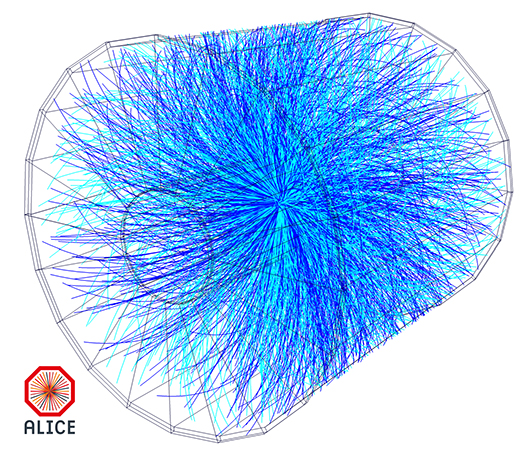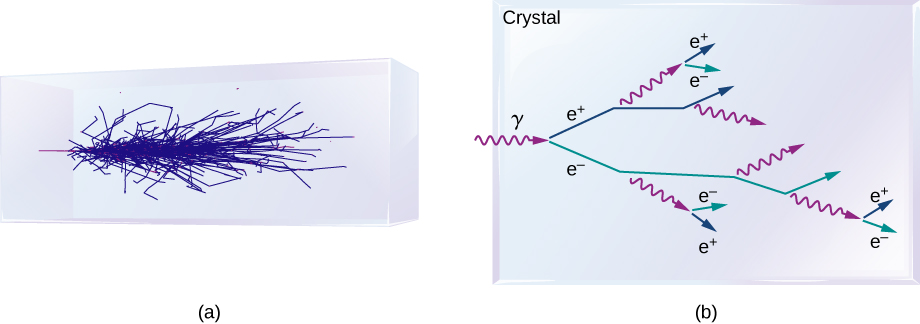| << Chapter < Page | Chapter >> Page > |
The first set of subdetectors that particles encounter is the silicon tracking system. This system is designed to measure the momentum of charged particles (such as electrons and protons). The detector is bathed in a uniform magnetic field, so the charged particles are bent in a circular path by a Lorentz force (as for the cyclotron). If the momentum of the particle is large, the radius of the trajectory is large, and the path is almost straight. But if the momentum is small, the radius of the trajectory is small, and the path is tightly curved. As the particles pass through the detector, they interact with silicon microstrip detectors at multiple points. These detectors produce small electrical signals as the charged particles pass near the detector elements. The signals are then amplified and recorded. A series of electrical “hits” is used to determine the trajectory of the particle in the tracking system. A computer-generated “best fit” to this trajectory gives the track radius and therefore the particle momentum. At the LHC, a large number of tracks are recorded for the same collision event. Fits to the tracks are shown by the blue and green lines in [link] .

Beyond the tracking layers is the electromagnetic calorimeter. This detector is made of clear, lead-based crystals. When electrons interact with the crystals, they radiate high-energy photons. The photons interact with the crystal to produce electron-positron pairs. Then, these particles radiate more photons. The process repeats, producing a particle shower (the crystal “glows”). A crude model of this process is as follows.
An electron with energy strikes the crystal and loses half of its energy in the form of a photon. The photon produces an electron-positron pair, and each particle proceeds away with half the energy of the photon. Meanwhile, the original electron radiates again. So, we are left with four particles: two electrons, one positron, and one photon, each with an energy The number of particles in the shower increases geometrically. After n radiation events, there are particles. Hence, the total energy per particle after n radiation events is
where is the incident energy and E ( t ) is the amount of energy per particle after n events. An incoming photon triggers a similar chain of events ( [link] ). If the energy per particle drops below a particular threshold value, other types of radiative processes become important and the particle shower ceases. Eventually, the total energy of the incoming particle is absorbed and converted into an electrical signal.

Beyond the crystal calorimeter is the hadron calorimeter. As the name suggests, this subdetector measures hadrons such as protons and pions. The hadron calorimeter consists of layers of brass and steel separated by plastic scintillators. Its purpose is to absorb the particle energy and convert it into an electronic signal. Beyond this detector is a large magnetic coil used to produce a uniform field for tracking.

Notification Switch
Would you like to follow the 'University physics volume 3' conversation and receive update notifications?